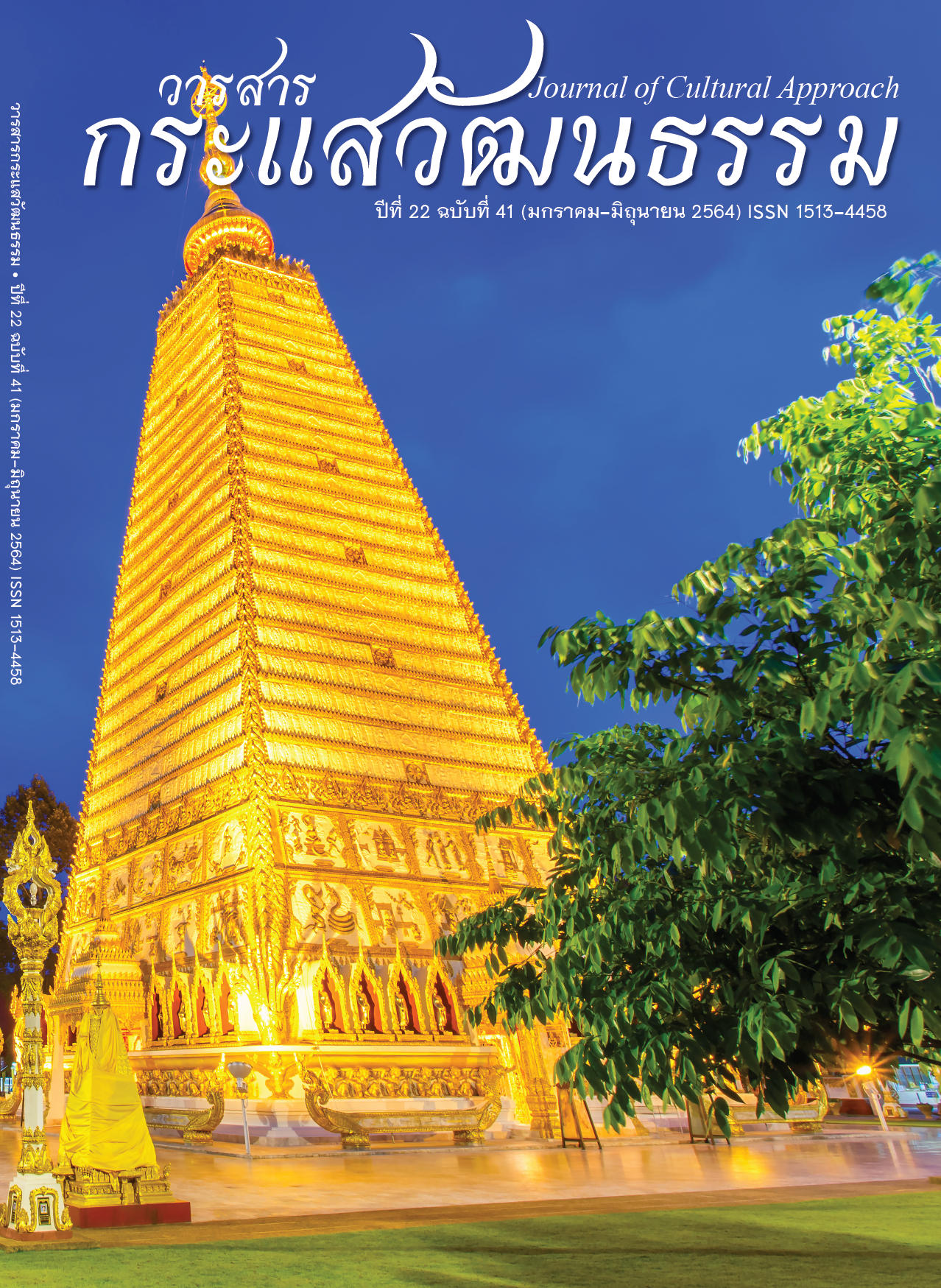Khmer Music: the Foundation of Cultural Resources and Conservation
Main Article Content
Abstract
Cambodia has a long history that passes through many historical events. Cambodian society has always been associated with music from the past, which is used as a tool for social responsibility in various ways and became an important cultural product. Although Cambodia still has many historic wounds, including the loss of art during Cambodia's worst downturn, Cambodian music has returned to its role and is widely popular in today’s society. Also, music has become an effective medium of public relations and social reflection.
Based on the study, it found that Khmer music can be classified into 2 types: royal court music and folk music. The “Pinpeat” band is a very advanced Cambodian band, which originally performed for the King and the Royal Court, but nowadays it has been played widely in the region. The most popular folk song is "Phleng Kar", a traditional wedding song that has been passed down from generation to generation. Khmer music has become an important resource in Cambodia's efforts to establish cultural identity after past security impacts that caused an era of societal and cultural depression. Cambodia currently uses art as a medium to convey their stories to the world. The policy of arts and culture has been applied in the development of the country. In terms of cultural products, Khmer folk music is transmitted through ancient dances through various advertising media outlets. The Cambodian government has given importance to art as a national heritage, although they still lack the funding to support it. As the result, the private sector took part in the preservation and promotion of the arts to be recognized by the world.
Article Details

This work is licensed under a Creative Commons Attribution-NonCommercial-NoDerivatives 4.0 International License.
Proposed Creative Commons Copyright Notices
1. Proposed Policy for Journals That Offer Open Access
Authors who publish with this journal agree to the following terms:
- Authors retain copyright and grant the journal right of first publication with the work simultaneously licensed under a Creative Commons Attribution License that allows others to share the work with an acknowledgement of the work's authorship and initial publication in this journal.
- Authors are able to enter into separate, additional contractual arrangements for the non-exclusive distribution of the journal's published version of the work (e.g., post it to an institutional repository or publish it in a book), with an acknowledgement of its initial publication in this journal.
- Authors are permitted and encouraged to post their work online (e.g., in institutional repositories or on their website) prior to and during the submission process, as it can lead to productive exchanges, as well as earlier and greater citation of published work (See The Effect of Open Access).
Proposed Policy for Journals That Offer Delayed Open Access
Authors who publish with this journal agree to the following terms:
- Authors retain copyright and grant the journal right of first publication, with the work [SPECIFY PERIOD OF TIME] after publication simultaneously licensed under a Creative Commons Attribution License that allows others to share the work with an acknowledgement of the work's authorship and initial publication in this journal.
- Authors are able to enter into separate, additional contractual arrangements for the non-exclusive distribution of the journal's published version of the work (e.g., post it to an institutional repository or publish it in a book), with an acknowledgement of its initial publication in this journal.
- Authors are permitted and encouraged to post their work online (e.g., in institutional repositories or on their website) prior to and during the submission process, as it can lead to productive exchanges, as well as earlier and greater citation of published work (See The Effect of Open Access).
References
Chaianan Samudavanija. (1997). Cultural as Capital. Bangkok: P. Press.
Chao Kanwicha, Sangkom Pumipantu & Manop Wisuttipat. (2016). Transmission of Pinpeat Music Tradition in Cambodia. Dhonburi Rajabhat University Journal, 10(1), 74–85.
Panya Rungruang. (2007). General Knowledge Music in Southeast Asia World Music 2. Faculty of Music, Bangkokthonburi University.
Poonpit Amatyakul. (1992). The 23rd Southeast Asian Music Grouping. Bangkok.
Sam–ang, S. (2007). Transmission of Khmer Traditional Performing Arts: Its Genuineness, Challenge, and Impact on Society. In Terada, Y. (Ed.). Senri Ethnology Reports 65, Authenticity and Cultural Identity Performing Arts in Southeast Asia, (pp.123– 136). Osaka: National Museum of Ethnology.
Subhadradis Diskul. (2005). Southeast Asia History: the Historical Society. Bangkok: Treelada.
Sujit Wongthes. (2010). Cultural Peace Music. Mahidol University.
Sujit Wongthes. (2013). Arts and Culture of ASEAN. Bangkok: Art and Cultural Center.
Tinnakorn Attapaiboon. (2005). Folk Music: Isan–Laos–Cambodia and Other Music Instruments (Folk Music Emerald Triangle). Ubon Ratchathani: Yongsawat Intergroup Press.
UNESCO. (1992). Angkor. The World Heritage Committee held in Santa Fe, U.S.A.
Ung, C. (1979). Cambodia: Traditional Music Vol 2: Tribe Music, Folk Music and Popular Dances. United States.


